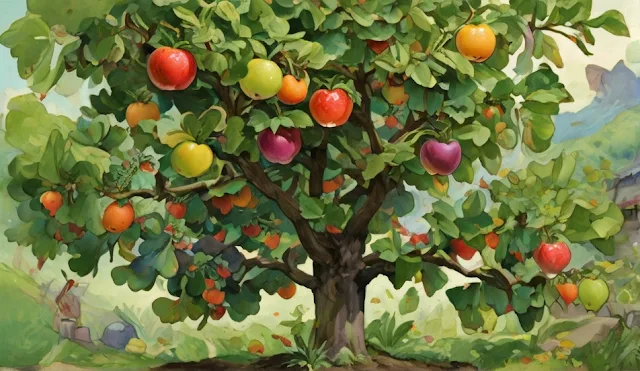The allure of growing your own fruit trees
is undeniable. From the satisfaction of harvesting your own fresh fruit to the
joy of nurturing a living, fruitful tree, the journey of cultivating fruit
trees is both rewarding and fulfilling. If you're new to fruit tree gardening
and eager to dive in, this beginner's guide will equip you with the knowledge
and confidence to embark on this exciting adventure.
Selecting the Right Tree: Before you start planting, it's essential
to choose the right fruit tree for your garden. Consider factors such as your
climate, soil type, available space, and desired fruit varieties. Research
which types of fruit trees thrive in your region and are suitable for your garden
conditions. Popular options for beginners include apple trees, pear trees,
cherry trees, and peach trees, but don't be afraid to explore lesser-known
fruits that may be better suited to your area.
Choosing a Suitable Location: Once you've selected your fruit tree, it's
time to find the perfect spot for planting. Fruit trees require ample sunlight,
well-drained soil, and adequate air circulation to thrive. Choose a location in
your garden that receives at least six to eight hours of sunlight per day and
has good drainage to prevent waterlogging. Consider the mature size of the tree
and ensure it has enough space to grow without overcrowding other plants or
structures.
Preparing the Soil: Before planting your fruit tree, prepare
the soil to provide it with the best possible growing conditions. Test the soil
pH and make any necessary amendments to adjust it to the optimal range for your
chosen fruit tree. Loosen the soil to a depth of at least 12-18 inches to allow
the tree's roots to establish and spread easily.
Planting Your Tree: When planting your fruit tree, dig a hole
that is slightly wider and deeper than the tree's root ball. Gently remove the
tree from its container or packaging and carefully loosen any tangled roots.
Place the tree in the center of the hole, ensuring that the graft union (the
bulge where the scion meets the rootstock) is positioned slightly above the
soil level. Water the tree thoroughly
after planting to help settle the soil and encourage root establishment.
Providing Adequate Care: Once your fruit tree is in the ground, it's
essential to provide it with proper care to ensure healthy growth and abundant
fruit production. Water your tree regularly, especially during hot, dry
weather, to keep the soil consistently moist but not waterlogged. Mulch around
the base of the tree with organic material such as wood chips or straw to
conserve moisture, suppress weeds, and regulate soil temperature. Prune your
tree annually to remove dead or damaged branches, improve airflow, and shape
the tree for optimal fruit production.
Protecting Against Pests and Diseases: Fruit trees are susceptible to a variety of
pests and diseases that can affect their health and productivity. Monitor your
tree regularly for signs of pest infestation or disease, such as unusual spots
on the leaves, wilting foliage, or insect activity. Implement cultural
practices such as proper pruning, sanitation, and regular inspection to
minimize the risk of pest and disease problems. Consider using organic pest
control methods such as insecticidal soaps, neem oil, or beneficial insects to
manage pests while minimizing harm to beneficial wildlife and the environment.
Enjoying the Fruits of Your Labor: With proper care and patience, your fruit
tree will reward you with a bountiful harvest of delicious, homegrown fruit.
Monitor the tree as the fruit develops, and harvest ripe fruit promptly to
enjoy it at its peak flavor and freshness. Share the fruits of your labor with
friends and family, or preserve them through canning, freezing, or drying to
enjoy year-round. Take pride in knowing that you've nurtured a living tree and
cultivated your own source of wholesome, nutritious fruit.
In conclusion, growing your own fruit trees is a
gratifying and fulfilling endeavor that offers numerous rewards. By selecting
the right tree, choosing a suitable location, preparing the soil, planting with
care, providing adequate care, protecting against pests and diseases, and
ultimately enjoying the fruits of your labor, you can embark on a successful
journey of fruit tree gardening as a beginner. So, roll up your sleeves, dig in
the dirt, and watch as your fruit trees flourish and thrive in your garden for
years to come.

